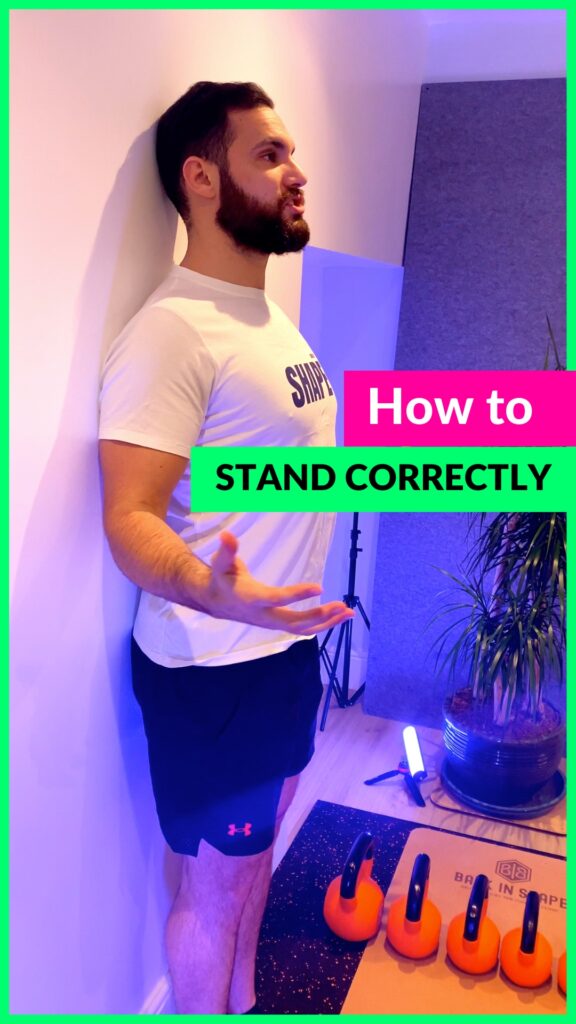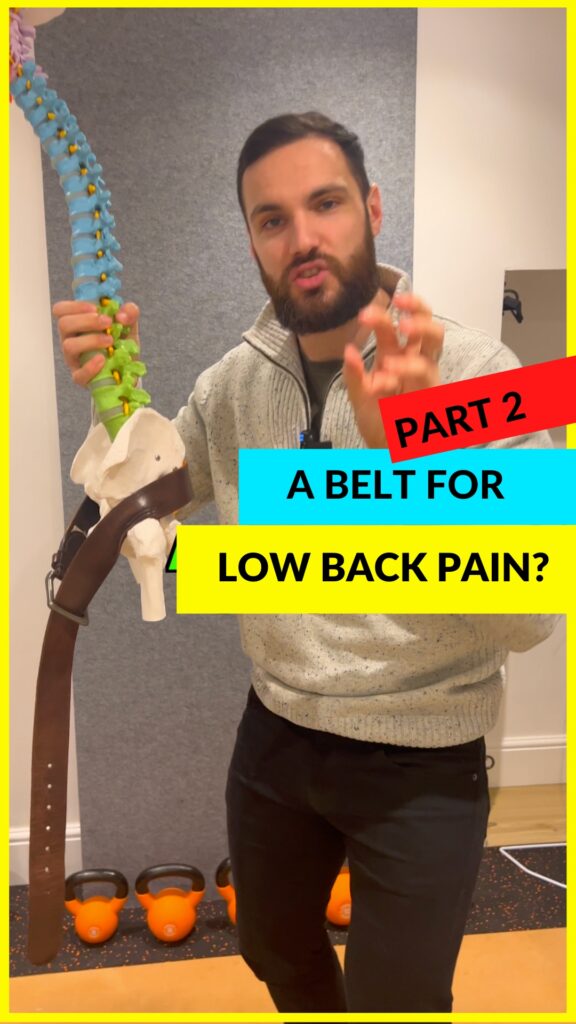
Diagnosed With Spondylolisthesis Causing Back Pain Or Sciatica?
You might be surprised to know that if you’re someone suffering from a diagnosis of Spondylolisthesis, a slippage of one vertebra on the other, that it has most likely been there long before your back pain started. As significant a diagnosis this is, arguably worse than a herniated disc, it is often something that many will have been walking around with without symptoms. We know this is a peculiar place to start but hopefully by the end of today’s article you’ll have an understanding of why we begin with this instead of some of the more negative aspects of what can objectively be considered a more severe back pain or sciatica diagnosis.
Over the years we’ve seen many thousands of X-rays of the lumbar spine and from time to time Spondylolistheses do make an appearance but what are they specifically and why are they an important observation. These can be broken down into Antero-listhesis, which means one vertebra has slipped forwards on the other, and Retro-listhesis, meaning a slippage backwards. We usually make reference to the action of the top vertebra to determine an “antero” or “retro” categorisation.

Anterior (forwards) movement is by far the most common and severe cases. This type of spondylolisthesis is diagnosed as graded on a scale of one to four. Grade one meaning that there is a slight slippage of the vertebral body forwards of no more than 25%, Grade two, 25% to 50%, Grade three 50% to 75% and Grade 4 a complete slippage. It’s worth noting that clinically amongst these thousands of X-Rays we’ve personally seen and analyzed, Grade One is 90% if not more, grade two 9.5% and Grade’s 3 and 4 are much more rare, primarily because a patient suffering with the latter two will not often be visiting an osteopathic clinic.
This movement of shearing or slippage, is a movement that should not happen in a normal healthy spine. The main reason for this is the interlocking structure of the vertebra. The facet joints create a mechanism whereby the bones simply cannot, under normal circumstances, sheer forwards.
So how does this happen?
3 Types Of Spondylolisthesis
You can categorise spondylolisthesis into three sets of circumstances, or types, please bear in mind these are informal rather than medical types but are helpful in understanding the different sets or scenarios that can lead to this back problem.
Breakage from extreme trauma
This first category of spondylolisthesis is, in our experience the least common, this one is where you’ve had a severe accident, perhaps fallen off a ladder onto your back and damaged the spine, chances are you’ve gone right to hospital, been imaged and the diagnosis made. It is however very likely in this scenario there are some other severe injuries that are sustained perhaps that take away from the concern over the back, such as head injuries or limb injuries.
A developmental defect in the Pars Interarticularis
When we are born much of our skeleton is cartilaginous in structure and slowly as we develop they turn into bone from “ossification centers”. This allows our skeleton to continue to grow until adulthood whereby the bones finish the process and “growth areas” close up and turn fully to bone. In the spine, two areas should meet one another at the junction between the front of your vertebra, the big part called the vertebral body, and the back part. The junction at which this point occurs is called the Pars Inter-articularis.
What happens in this case is that it never quite fuses as bone, and so a “weakness” is there. A lack of continuous bone affects the integrity of the spine. This is not a problem in itself but a vulnerability. Often this is the source of a spondylolisthesis, however it is not a foregone conclusion that the vertebra will slide forwards. More on this later.
Degenerative slippage
When the spine has lost its integrity, over time the facet joints struggle to stop this forwards slippage and become degenerative alongside the discs on the front, this leads to an often “self-limiting” slippage, whereby there is not a break or defect, but just bony change and degeneration. This naturally isn’t ideal and will happen over many many years.
As mentioned earlier, the first category described is much more extreme and less likely so we won’t spend more time talking about that one. The second two however are where most with this condition will find themselves and there are some vital things to consider and reflect on if you’ve had this diagnosis.

The difficulty with Spondylolisthesis when it comes to your exercises.
Spondylolisthesis is unfortunately not a one off diagnosis, fundamentally you cannot be diagnosed with this in isolation, you will have disc issues, perhaps degenerative, bulging or herniated. This brings up a large amount of uncertainty. Because movements of forward bending often feel nice, in part, because they open out the holes where the nerves leave the spine – an area that has already deformed if you have a spondylolisthesis. But bending backwards is considered a bad move for a spondylolisthesis, even though it takes pressure off the disc. This is the catch 22 and why the principles we teach you to focus on maintaining neutral, and building strength in the ability to do so is critical to your low back stability for the long term if you have this condition, more than most other diagnoses.
Confusion around the towel decompression for Spondylolisthesis
Another challenge comes with the towel exercise itself. When done carefully and diligently, often more conservatively, for example 30 seconds to begin with, it is one of the few ways you can alleviate the strain on all aspects of your back injury simultaneously. It does take a little gentle exploration though to get the towel sizing right for you and easing yourself into it.
The reason there is confusion is because of the perceived backward bending. However when we do the exercise correctly, the gentle stretch combined with the supporting of the natural curve of the spine takes pressure off the discs on the front, alleviates any extreme backward bending on the facets, and unloads tired ligaments and muscles in the region. It is a passive stretch, so not “fixing the problem” however in conjunction with strengthening rehabilitation work it is a great long term option.
The reality is you probably had your Spondylolisthesis before you had back pain or sciatica.
For the overwhelming majority of you with this diagnosis, you will have had this before you had back pain as you’ll fall into category 2 or more likely 3 of the “3 types” discussed earlier. This means that you’ve had a spondylolisthesis without back pain or sciatica, and in our experience, as improbable as it sounds, there is a good chance you can again have a spondylolisthesis without back pain or sciatica, or at least, significantly less symptoms.
Let us explain…
Granted, this is a serious diagnosis that you should fully appreciate, it means that it will take longer for you to recover and you will have to work to be stronger and more flexible than your contemporaries. But chances are you have not been living life by that philosophy to this point.
Our bodies, your body, is remarkable. The capacity for adaptation and compensation is second to none. There are stories all over the world of people overcoming these odds and we have more than enough experience with patients in our clinic, and members of the program with severe versions of this condition doing the work, hard work, and making the progress necessary to build their body back up and “handle” this weakness.
You see, you will have been walking around with the spondylolisthesis there all this time, steadily getting worse, perhaps, or perhaps just stable. But because it is a weakness, at some point that “event” happened that strained the soft tissues around the spondylolisthesis. Often it’s the extra compromise of that disc on the front that was the thing that set everything off – symptom wise. Then, like everyone does, you muddle around on your own for a while, thinking it’s nothing serious, try some exercises (that we often would advise against) and it perhaps settles, stays the same or just gets worse. Then after this cycle continues for months/years/longer you end up getting imaging and boom, there it is, as if it just happened…
… but it had always been there, you just gradually deconditioned your body actively or accidentally to the point the compensatory mechanisms that were holding everything together can no longer do so.
For now.
At the end of the day this is luck in many ways and there is little to no benefit in trying to relive the past, to find some golden cause, it matters little and only stops you moving forwards with what needs to be done. It’s always been difficult when you see someone that is so intent on re-examining the past that they let years go by without doing anything to move forwards making the eventual, necessary journey that much more challenging.
So what can you do to fix your spondylolisthesis?
We’ll say it now, not to be negative but to be real. You’re not going to make the spine new again. However I will draw you back to what we mentioned earlier, you had a long period of time where you had this without “symptoms” the soft tissues around the spondylolisthesis were strengthened and stabilizing and bracing everything nicely.
You can do this again, but it takes time!
To start with you need to acknowledge the journey will take time. This is non-negotiable. Due to the nature of this particular issue, spondylolisthesis, you will be more likely to suffer relapses in the early days, do not be put off by these too much.
Know that you need to develop good spinal control, an ability to maintain neutral in the spine in spite of stresses pulling it in different directions. You will need to have hips that are stronger and more flexible than the average person, so you can use these hips to take more of the movement that would ordinarily translate into the lower back, this means your low back is less likely to have to move into a compromised position, decreasing the likelihood of flare ups short term and long term.
You then need to build strength on all fronts and steadily introduce loading to your spine giving both the muscles and the deeper ligamentous tissues around the spondylolisthesis time to adapt, change and strengthen up to provide the local protection required.
As the months and years go by, you will find that your back becomes more and more resilient and fundamentally you’re able to live life normally again. However you must acknowledge the requirement to continue your strengthening work and flexibility work for the long term, with a priority on the former.
If you give yourself the right time frame, and move forwards consistently, you will surprise yourself at what can be achieved. It goes without saying, if you’ve read this far and need help with the specific steps, get involved in the Program with Premium Membership and follow in the path of others before you, who’ve successfully “fixed their back pain from home” in spite of being diagnosed with Spondylolisthesis.
Read Janet’s Story If You Have Spondylolisthesis…
“I’ve been with this program for three years now and when I started with it my back pain was really bad, I was thinking of giving up my job which involved lifting bending and standing and walking. The results of MRI scan came back and was told it’s just west and tear and to just take painkillers. Through BIS I learned that I had spondylolistheses grade 2, so I started on the program, taking the collagen and vitamins supplements. But most of all it gave me hope that with hard work I could be pain free.
A recent X-ray showed my grade 2 diagnosis was down graded to a 1. I was ecstatic. I now only get an ache in my glutes if I’ve overdone it at work. I do yoga, gym, swimming and recently started a pump class with light weights.
I have now decided to end my membership and say farewell to Mike and Lara and thank you for your in-depth knowledge, exercises and passion that you put into the program. I will continue to take my supplements. I wish everyone good health in 2023.”

Latest Tips In Less Than 60 Seconds!











Hi Mike
Would it be possible to have a description of the sort of symptoms associated with Spondylolisthesis (say Grade 1/2 Anterolisthesis), for comparison? For instance, the sort of pain (or spasms), and the precise location of such pain, that one may typically endure with this condition. Many thanks.
That’s a great question Noel, we’ll discuss this in more detail on the live, it catches people out a lot, the reality is rather anticlimactic unfortunately. The normal back pain symptoms and/or sciatica type symptoms. Some will have no symptoms, and symptoms will be possible to resolve without the diagnosis of the “slip” actually changing. I know that might raise more questions than answers, hence covering it on the live this coming Wednesday @ 12:30PM 🙂
Thanks Mike
By allowing the pain to take control and backing off from doing my phase 4 exercises at the end of last year I now understand where the deterioration in my condition came from. As the pain increased, I backed off from my BIS routines and on it went. Once I have got my tongue around saying spondylolisthesis I shall enjoy repeating it to my doctor when he refers to my trapped nerve! Education is invaluable and I wont make the mistake of putting my bands away again that is once I get back to the resistance levels again. Thanks again guys, this is certainly a journey that I am glad I am doing with BIS there to guide me.
Thanks for the kind words Jane and it is great to hear that the understanding side of things is helping. Yes it is such a mouthful! Happy to be there to help guide you, keep up the good work.
Hi Michael,
Your video on Spondylolisthesis, specifically anterolisthesis, was of particular importance to me, having been diagnosed with anterolisthesis Grade 1.
My take aways from this are:
The symptoms can manifest years later.
Both the understanding/ knowledge are as important as the back strengthening workouts.
Recovery can take a long time and maintaining your back health is a life long process.
I do have some bad days, but am feeling the benefits of the programme in strengthening my back and legs, and in my overall mindset. Your encouragement and support has been of real value to me. Much appreciated.
Thanks James, that’s a kind comment and I’m glad you’re finding it helpful! The only thing i would add, just a slight tweak, rather than “the symptoms can manifest years later” i’d add, “or not at all”. As it is more often a case of the segment being vulnerable (weaker) and this weakness is exploited later, often when we are not as conditioned as we should be (given the vulnerability).
I hope that bit makes sense 🙂
Makes sense. Thanks